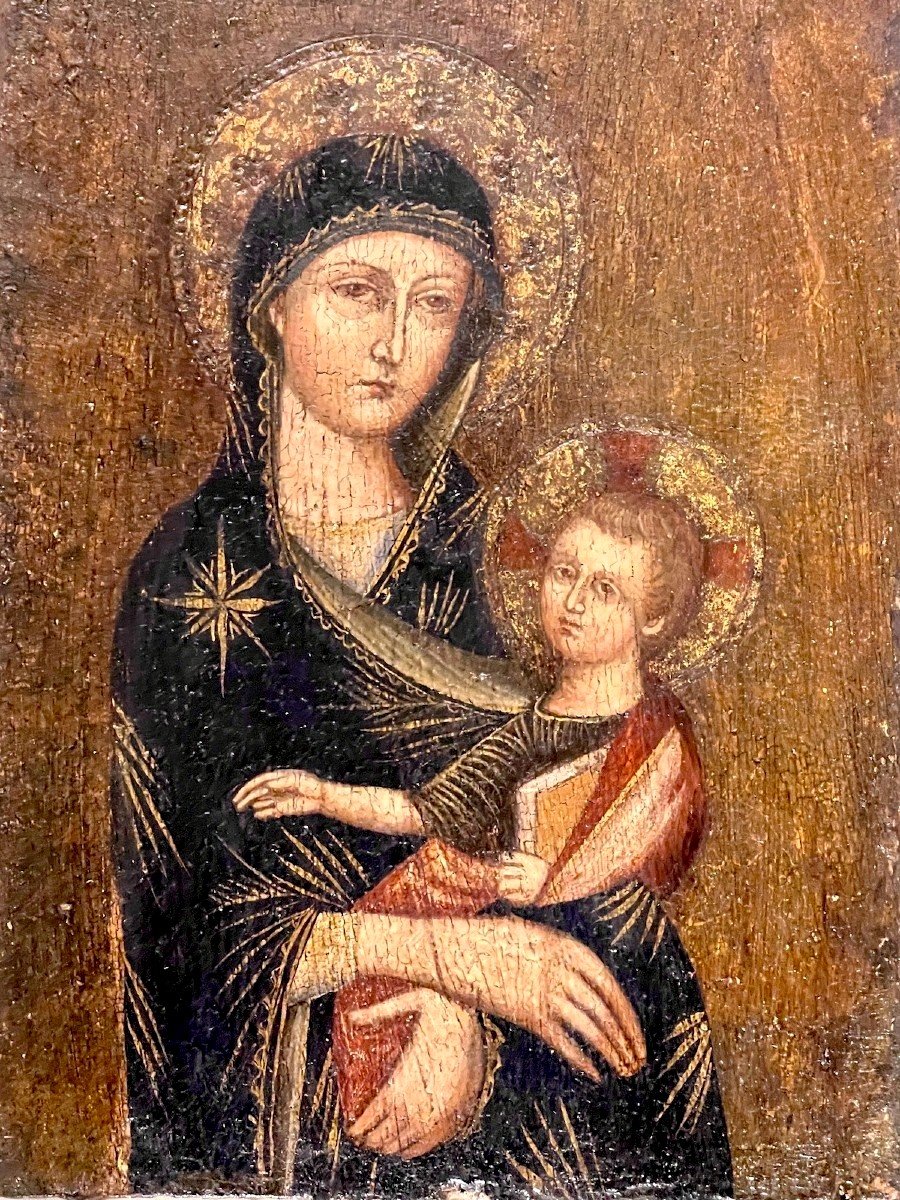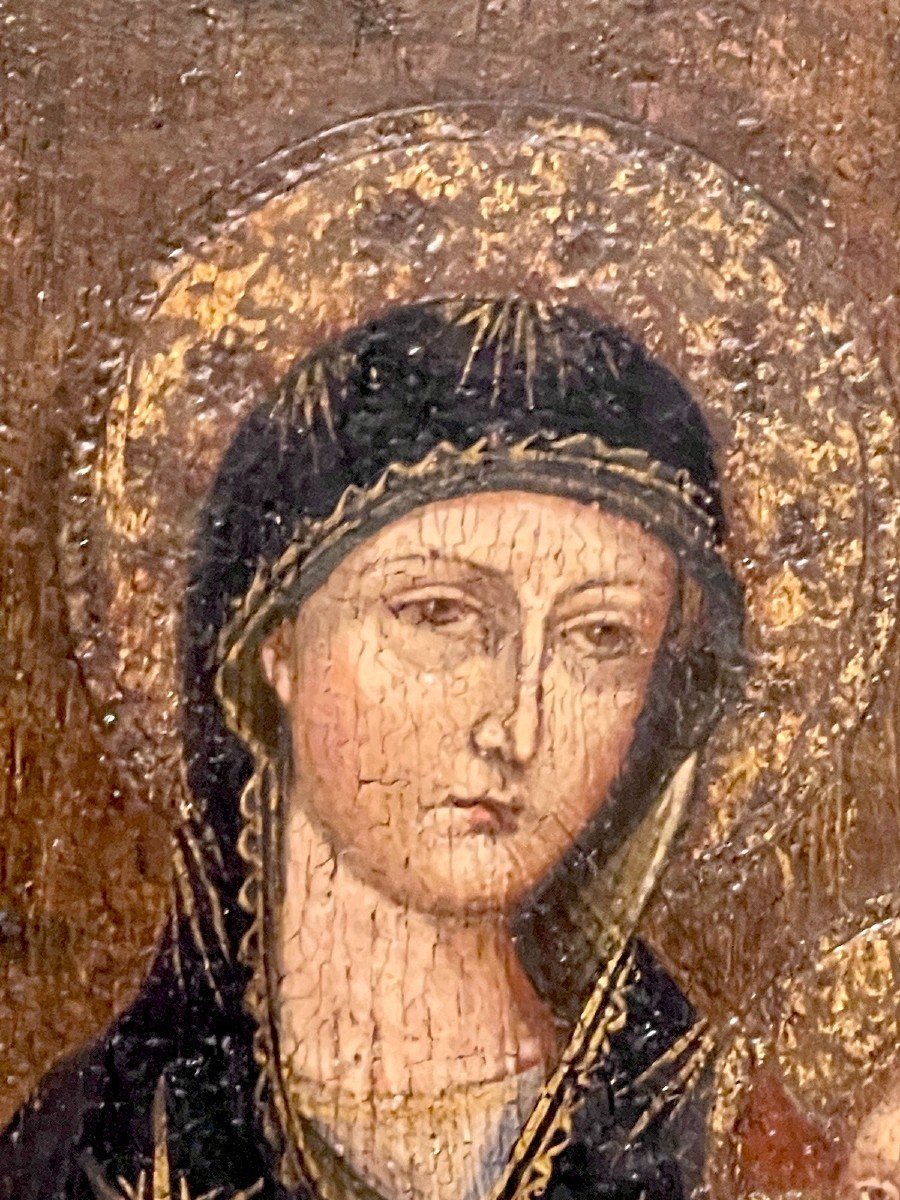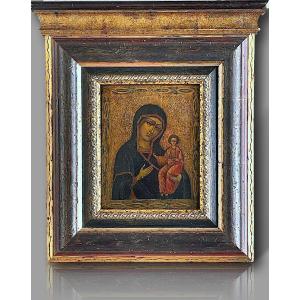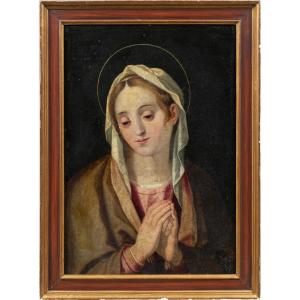Here are some key elements of this type of representation in art history:
1. Byzantine Origin: Icons of the Virgin and Child have their roots in the Byzantine Empire (4th–15th centuries). They are often stylized, with frontal expressions and a golden background symbolizing the divine.
2. Spread to Western Europe: These representations influenced Gothic art, particularly in Italy, where artists such as Duccio and Cimabue developed a similar style but with more naturalism.
3. Symbolism: The Virgin is often represented as a figure of gentleness and motherhood, while the Christ Child embodies divine wisdom and spiritual royalty.
This work appears to belong to this tradition, possibly from the 14th or 15th century, with typical characteristics: a halo for holiness, rich colours and symbolic gestures (such as the Virgin holding the Child).
This painting on a wood panel, done in tempera, embodies the Venetian religious art of the Quattrocento (15th century). A testimony to the devotion and artistic virtuosity of the Italian Renaissance, this work combines the persistent Byzantine characteristics with the stylistic innovations specific to this period.
The Virgin Mary is represented with a gentleness and serenity characteristic of sacred iconography. Her face, marked by delicacy, is framed by a richly decorated veil.
The Child Jesus, slightly inclined towards his mother, holds a scroll, symbolising the divine word, and sports a crossed halo, emblem of his divine nature.
The ornamental details of the halos, the meticulously painted draperies and the play of light testify to the influence of the Venetian schools and their attachment to tradition while adopting elements of perspective
and realism.
History of the scene:
This representation of the Virgin and Child is one of the major themes of Christian art, symbolizing maternal love and faith. The Quattrocento period saw an artistic revival where sacred art was imbued with humanism, making religious figures more accessible and close to humanity. Venice, in the 15th century, was a cultural crossroads influenced by Byzantium and central Italy, which is reflected in this work.
Graphic details:
Technique: Tempera on wood panel, a common medium at the time, known for its luminosity and durability.
Colors: The dominant hues are the deep blue of the Virgin's mantle, enhanced by golden patterns, and the warm tones of the natural wood visible in the worn areas. The gold of the halos brings a sacred and luminous touch, typical of Byzantine and Gothic iconography.
Condition: The network of cracks, natural for a work of this period, adds to its authenticity. Some minor restorations are visible, particularly in the gilded areas.
Scenography and enhancement:
A sober but elegant frame, in gilded or patinated wood, would highlight this piece while respecting its sacred character. Installed in a bright space, this work could become a focal point of an ancient art collection.
Shipping:
We guarantee professional and secure packaging to preserve the integrity of this exceptional piece during its transport.
#SacredArt #ItalianRenaissance #Quattrocento #VenetianArt #VirginandChild #TemperaOnPanel #HistoricalArt #ArtCollection #Masterpiece #Antiques #ReligiousPainting #ByzantineArt


























 Le Magazine de PROANTIC
Le Magazine de PROANTIC TRÉSORS Magazine
TRÉSORS Magazine Rivista Artiquariato
Rivista Artiquariato
